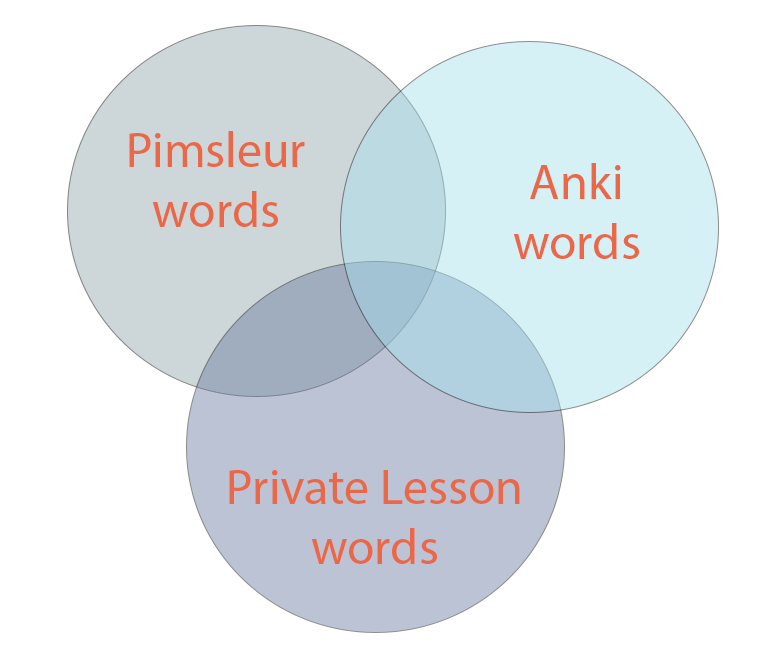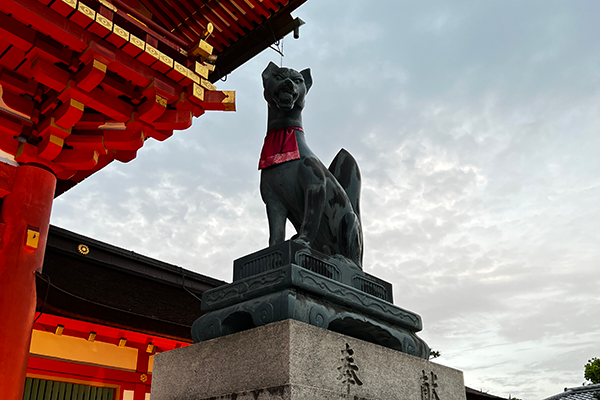Why I'm vibe coding WordSen
I needed a better Anki.
That is the shortest answer to why I created WordSen. I had been learning Japanese for a few months in preparation for my first trip to Japan at the age of 38. After spending time in New York City, I wanted to go to another gigantic population center, and there is none more densely packed than Tokyo. As luck would have it my work was also sending me to the Philippines later that year. That meant I could take a quick flight to Japan after my work trip and spend two full weeks in the land of the rising sun.
I had always been interested in Japanese culture, but this was my first real effort to learn the language. I had six months before my trip to learn enough to get around not only the larger, more touristy areas like Tokyo and Kyoto, but also the smaller, more monolingual cities of Kanazawa and Nagano.
Tools I used to learn (enough) Japanese in 6 months
If you only have six months to learn Japanese there are a few tools that are really helpful:
Pimsleur Audio Lessons
These are absolutely fantastic at helping your pronunciation and getting you comfortable speaking. Without these lessons I would not have felt confident enough to say to the taxi driver when I first landed…
“お天気ですね” or “Nice weather, isn’t it?”
I felt ecstatic when he replied back with, “そうですねえ” and I actually understood him! (he was agreeing with me).
Pimsleur burned into me how important it is to understand full sentences, repeat them out loud, and have them in your back pocket to use in every day situations.
One-on-one Private lessons
I signed up for weekly lessons with a wonderful Japanese teacher. These weren’t nearly as helpful as Pimsleur for learning the core vocabulary I needed for my travels, but she did help clarify some of the strange nuances of the language and answer any questions that came up. She also confirmed my pronunciation was quite good (thanks Pimsleur!), something I had been worried about.
Anki Flashcard System
When learning a language you need to learn a lot of new words. There is no way around it. The grammar, cultural rules, and even pronunciation aren’t nearly as important as learning enough words to be able to speak and understand what is said.
Anki is the system everyone recommends. It is a spaced repetition system where flashcards with words on them are shown at specific intervals to enhance the likelihood of you storing the words in long term memory. You ideally want to be shown a word when you are right on the edge of forgetting it. If you do that, you have a higher likelihood of remembering it for longer next time. After 5-12 repetitions that word should be one you never forget!
The problems with Anki
While anki is the gold standard, it caused endless frustration:
Anki is complicated to use
I’m not here to say Anki is impossible to use like one of those old infomercials of someone demonstrating how difficult a simple object like a ‘hose’ is to control.

But let me be real—I am a very technical person and I spent hours trying to set up Anki. The problem is there are so many ways to customize it that doing something basic was incredibly difficult. When you start researching all of the advanced options and how people recommend you adjust your cards per day or your ‘ease factor’ (what the heck is that!?) for maximum retention, it gets very overwhelming.
Anki has no default set of Japanese flashcards
If you’ve researched Anki you might say something like:
“Hey! Anki has hundreds of different free decks of flashcards you can use!”
Yes, that is true. I probably downloaded a dozen of them at least trying to find one that fit me. Most of them were either too advanced, too basic, had weird words, or needed advanced plugins to operate. I also didn’t know if I should choose a deck with the 3,000 most common Japanese words, or maybe focus on words used in anime since that’s what I wanted to watch.
I did eventually find a good deck that had some awesome features like:
- Images to help with emotional memorization
- Full example sentences instead of just the Japanese word
- Automatically played audio of the Japanese sentence being spoken
- It even had explanations of Japanese grammar rules
It was a great deck. If you want to check it out it’s J-Labs Beginner Course. It’s a GREAT Anki deck, especially if you want more ‘casual’ spoken Japanese.
No easy way to add cards to a deck
While the J-Labs Anki deck is great, I never found an easy way to add Japanese words that I encountered in the real world. If I encountered a cool phrase while playing a Japanese game or watching a movie or anime, I couldn’t capture it to study later.
I also found that the words I was learning in Pimsleur didn’t line up with what I was practicing with my instructor, and none of those were in my Anki deck. Not much overlap.

The solution to this might have been to create my own custom Anki deck. I tried that but my attempt was quite pathetic. The whole interface was confusing and I had no way to add audio of the sentence for the word I was trying to study (or ensure the sentence was correct Japanese!). Plus, adding a word to my Anki deck meant I had to be at my computer. This wasn’t ideal since I usually wanted to add a word when I was doing something else, like watching an episode of Spy X Family.
My second BIG problem: (not) studying every day
Studying flashcards isn’t fun. I’m not going to sugar coat it. Maybe some masochists out there love studying their Anki decks but for me it was always a pain. That led to me sometimes skipping a day. That skipped day became two, then three, and before I knew it I had missed a couple weeks.
When you miss so many days in Anki, the system doesn’t know you haven’t been studying. It just keeps piling up your cards ‘due’ for review every day. Before you know it, you have dozens or even hundreds of reviews. It’s an AVALANCHE that makes you want to study even less.
Cue giving up completely.
I was in that cycle for a while. Never progressing, always feeling terrible.
What I needed was an app that had:
- A core set of flashcards containing common Japanese words
- Each flashcard would have images, example sentences, and furigana (I don’t know much kanji!).
- An easy way to add flashcards and create example sentences with audio
- A GOOD reason to login to the app every day so you don’t fall behind
As far as I knew, there was no app out there that existed like that. So I decided to create it.
My own App: What makes WordSen different?
I’m sure I’ll dive into how I am creating WordSen in future blogs, but for now I wanted to explain what makes WordSen different. The things I am adding make it the very best app when it comes to learning Japanese vocabulary.
Flashcards built to remember
The flashcards in WordSen contain all of the things you need to help build memory connections in your brain:
- Full Japanese sentences so learn words in context
- Furigana above all kanji so you can read without knowing thousands of characters
- Romaji for the core word in case you’re a super beginner
- Male and female AI-generated audio saying the example sentence
- Customized images for every flashcard
That last feature was something I added after my positive experience with the J-Labs Anki deck that had anime images with every card. I just seemed to remember those words better. This experience was confirmed in the book ‘Fluent Forever: How to Learn Any Language Fast and Never Forget It’ by Gabriel Wyner. He found two things:
- Images drastically increase memory retention because of how visual our brain is.
- Hand making your flashcards also helps improve memory as you are tying a real experience to the new word.
But how can you hand make a digital flashcard? By taking a picture! Every flashcard in WordSen has an image you can add. I encourage you to take one with your phone camera or upload one from your favorite movie or anime. And don’t worry, images are only stored locally. WordSen is privacy-first, and your images are never uploaded to the cloud. There’s no way for anyone to see the images for your flashcards except you. If you decide to switch phones, there’s also a handy image export feature so you can easily move your customized images to a new phone.
1,000 Words is significant and ACHIEVABLE
I curated a list of the most commonly used Japanese words. These are the first 1,000 words you should learn in your journey. If you learn just these 1,000 words you will be able to understand the majority of words in most sentences. You might not catch every word, but you can start gleaning a lot of context.
Just like you can understand a lot of what Mia says here:
“Hi my name is Mia and I like to eat eggs for breakfast ——— they have lots of ———–. ————– I’ll add ———— like —— peppers or onions to ——- it up. When I do that my sister refuses to eat the food and says it tastes ——-“.
Now, you may not know EXACTLY what Mia is saying, but you can probably guess, especially if you add other context like where she is when she says it and her non-verbal body language.
That is the power of knowing enough vocabulary.
To drive this point home, during my first trip to Japan I only knew about 200 words. But even that number of words was enough to let me order food at a restaurant, ask for directions, make (very!) small talk, ask if a store was open, and get a taxi from a phone service! That last one required every bit of my meager vocabulary because the person on the other end didn’t speak ANY English.
If I can have a successful 2-week trip in Japan with 200 words, you’ll be able to do so much more once you conquer 1,000. If you learned 5 words per day you would be done with that in about 7 months. Once you know 1,000 words you can start unlocking the real fun of learning languages which is understanding books, movies, and shows in your target language!
Best motivation: Study or your pet dies!
You aren’t a murderer… are you? Okay, okay, it’s not quite THAT serious. But that’s good motivation, isn’t it?
I can’t always have enough motivation to study for myself, but if studying allowed me to take care of a cute little mythical fox? You bet I’ll study a bit more consistently.
I loved the Tamagotchi pet games as a kid. That’s why when you study with WordSen, you earn energy to take care of your Kitsune. Kitsune are supernatural fox creatures from Japan.
You can feed it, teach it tricks, and even decorate its house! That way it has a wonderful place to live.
The addition of the Kitsune pet was the final piece I needed to create a game that solved all of my studying problems. Now if I didn’t study, I wouldn’t have earned the energy to feed my little Kitsune. If that happened too many days in a row, my cute fox would turn to stone. Just like this stone Inari I saw on my trip:

Easily add new words to study
The last problem to solve was being able to easily add words to my flashcard deck when I came across them in books, shows, and other media. This was a CRITICAL feature. We don’t want a repeat of the Venn diagram above.
That’s why I’ve made it incredibly easy to add words to your study list.
You just click the ‘add a word’ feature and record yourself saying the phrase you just heard. It’s as simple as that!
WordSen will then use AI to analyze your word/phrase, correct it if needed, generate spoken audio, and automatically add it to your study list. The next time you study, you’re presented with that word and can hear male and female speakers repeating it back to you. The card has the same format as all the core study words, and you didn’t have to do anything extra!
This was a huge must-have feature for me. It’s one that any serious Japanese learner needs if they’re regularly consuming Japanese content.
Vibe coding a full app as a non programmer
Probably the most interesting thing about this entire development journey is that I don’t know any programming languages. Yes, when I was 12 I studied a little Visual Basic and C, but I never got through even 10% of any of the ‘how to program’ books I was reading. I can understand a little HTML or CSS now, but not enough to write anything.
I certainly don’t know Swift (the programming language Apple uses for its devices). I also don’t know C#, the programming language used in the Unity game engine that powers the Kitsune parts of my app.
I haven’t written a single line of code myself for WordSen.
Not. One.
I’ve been creating WordSen since mid 2024 and I hope to have a beta release before the end of 2025.
My goal with this app is to not only create a tool that I will use, but one that would help other people just like me.
The core functionality of the flashcard study system is complete, and I’m currently working on building out the game functionality. I thankfully do have some 3D graphics experience as I used to be a 3D artist in my early 20s, but it’s been a long time since I pushed any pixels around. I’m in the process of learning Blender since I can’t afford the tools I was familiar with (Maya and 3ds Max). I’ve been pleasantly surprised at how robust Blender is!
Next steps: Getting ready for beta testing!
My core goal right now is to get the app ready for other people to use. I am DEEPLY interested in any feedback users have for the app as I plan to guide development based on what they tell me.
I’m hoping to have 20-100 beta testers try everything and let me know what works, what doesn’t, and what could be better. If you’re interested in learning Japanese, please join my beta! The only requirement is that you should know most of the hiragana and katakana characters and have an iPhone.